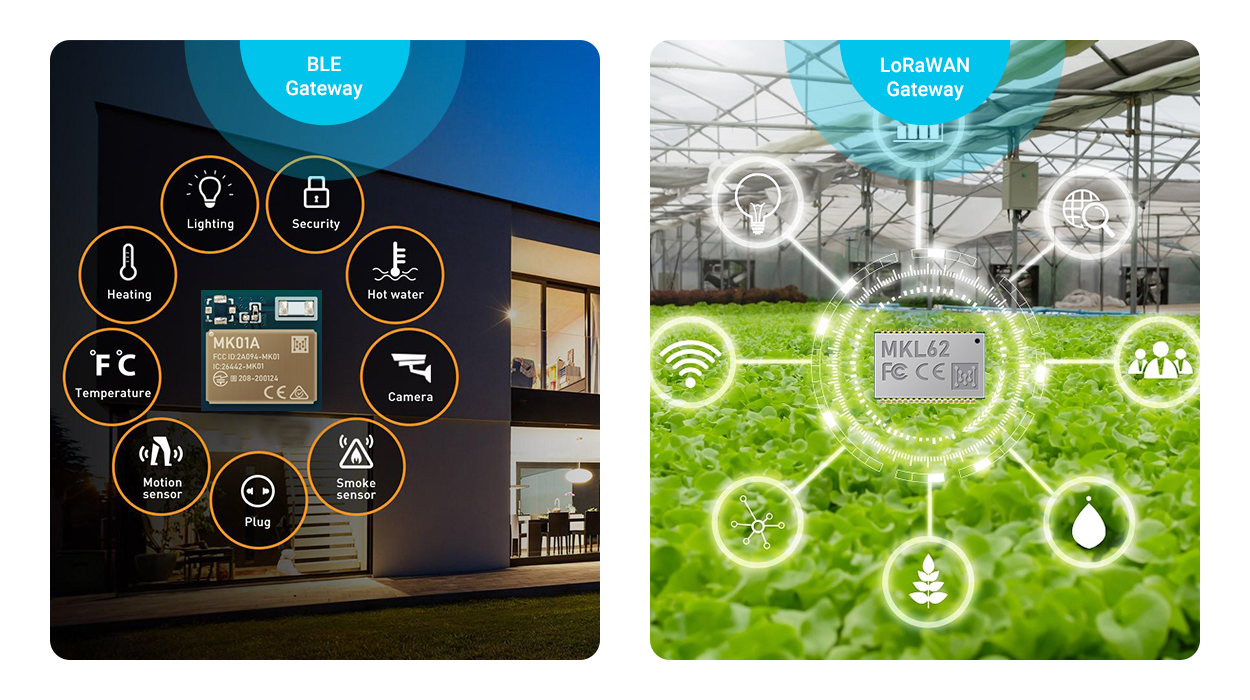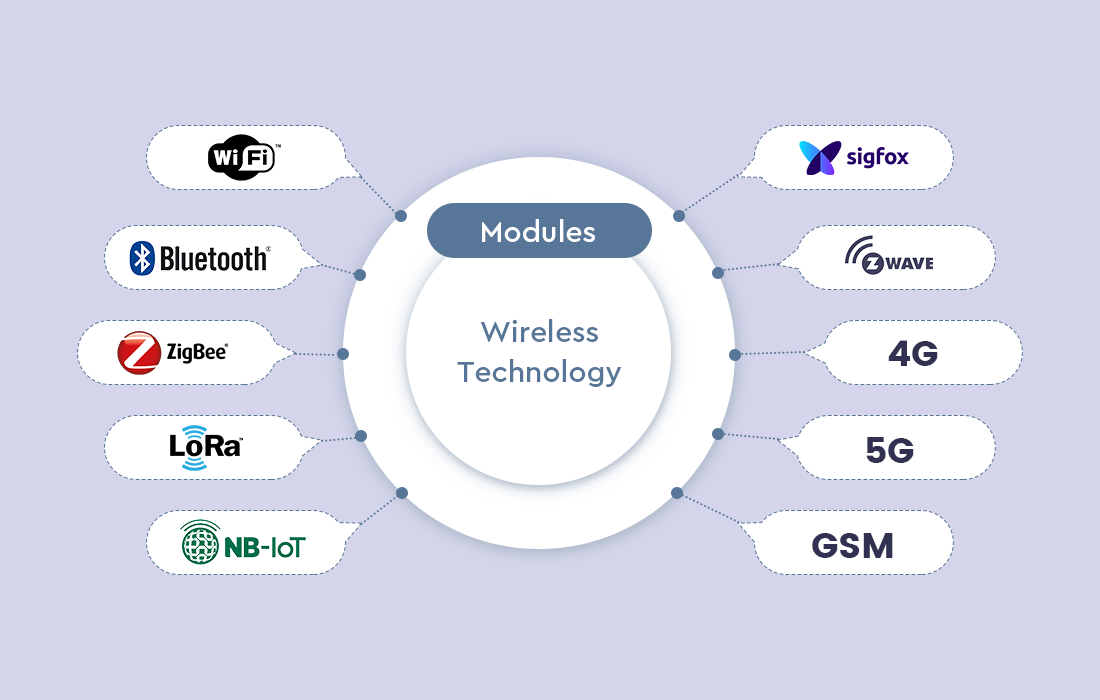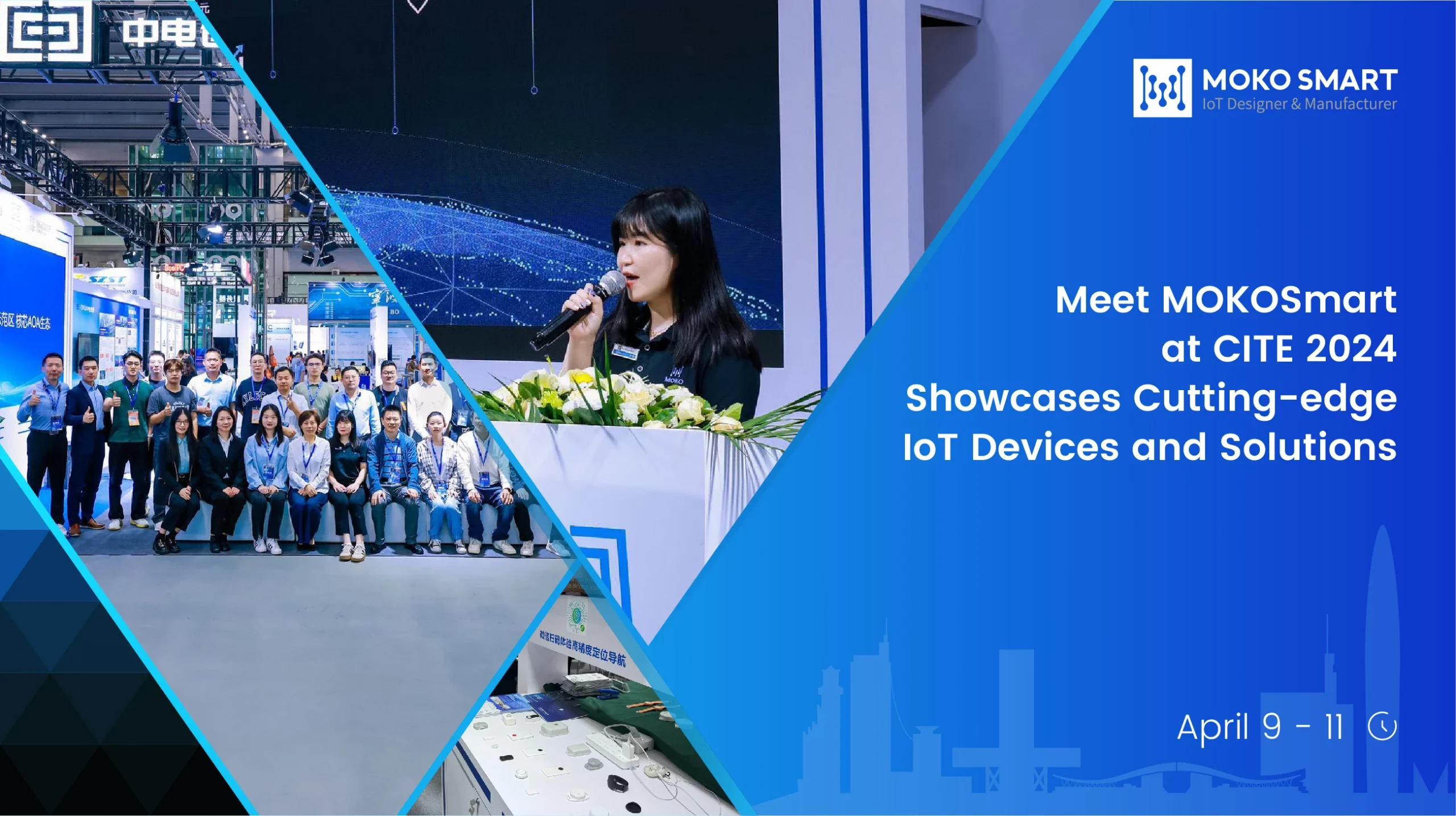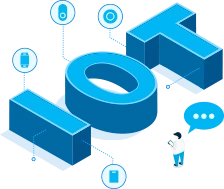Immagina un mondo in cui ogni dispositivo, dalla tua casa intelligente alla tua auto, è perfettamente connesso, scambiare informazioni per migliorare la tua vita quotidiana. Questa è l’essenza dell’Internet delle cose, un regno in cui le industrie prosperano, l’efficienza vola, e l'innovazione non conosce limiti. Al centro di questa rivoluzione digitale, troviamo moduli intelligenti che svolgono un ruolo cruciale nel facilitare la connettività e la funzionalità dei dispositivi IoT. Fungono da fili invisibili che collegano il tessuto dell’IoT, consentire alle industrie di ottimizzare i processi, migliorare il processo decisionale, e ridefinire il modo in cui viviamo e lavoriamo. In questo articolo, approfondiamo i moduli IoT, la loro definizione, e le varie tipologie disponibili. Inoltre, esploriamo i loro casi d'uso, e considerazioni chiave per la selezione dei tipi di moduli IoT, e discutere i progressi nei moduli IoT.
Che cosa’È un modulo IoT?
Un modulo IoT è un componente elettronico compatto che integra l'hardware necessario, firmware, e funzionalità software per abilitare la connettività e la comunicazione wireless nei dispositivi IoT. Incorpora tecnologie come il Wi-Fi, Bluetooth, Zigbee, o cellulare (LTE, 5sol) per trasmettere e ricevere dati su reti. Complessivamente, I moduli IoT forniscono la dorsale di connettività per i dispositivi IoT, consentendo uno scambio continuo di dati e applicazioni trasformative.
8 Tipi di Moduli con Ddiverso Wirrequieto Ttecnologia
Il regno dell’IoT sta progredendo rapidamente, con la tecnologia che avanza rapidamente in tutto il mondo. La chiave per raggiungere il successo nel tuo progetto sta nel comprendere i principi fondamentali delle varie tecnologie di comunicazione wireless.
Wi-Fi mPaese
Un modulo WiFi, indicato anche come modulo WLAN, è un componente elettronico utilizzato in numerosi prodotti per stabilire una connessione Internet wireless. Per progettare questa tecnologia LAN wireless è stato utilizzato lo standard IEEE802.11. Questa tecnologia trasforma i segnali della rete cablata in segnali di onde radio, consentire ad altri dispositivi di connettersi a Internet in modalità wireless tramite WiFi attraverso l'uso di moduli di comunicazione wireless.
Modulo Bluetooth
UN Modulo Bluetooth è un set di circuiti fondamentale contenente un chip che incorpora la funzionalità Bluetooth. Funziona come modulo di comunicazione wireless 2.4G a corto raggio. Il modulo Bluetooth è visto dall'utente finale come un prodotto parzialmente finito. Riqualificando e incapsulando la funzione della shell basata sul modulo, il prodotto che può utilizzare la comunicazione Bluetooth è finalmente realizzato.
Modulo Zigbee
Un modulo Zigbee è un componente hardware progettato per facilitare la comunicazione wireless tra dispositivi che utilizzano il protocollo Zigbee. Zigbee è un protocollo wireless a basso consumo sviluppato appositamente per le applicazioni IoT. Utilizza una topologia di rete mesh, consentendo ai dispositivi di comunicare direttamente tra loro o tramite nodi intermedi noti come router o coordinatori.
Modulo LoRa
UN Modulo LoRa è un dispositivo progettato per offrire connettività wireless utilizzando il protocollo LoRaWAN. Serve come elemento cruciale nella creazione di una soluzione LoRa IoT di successo. L’adozione diffusa della tecnologia LoRa in diversi settori sta alimentando la crescente domanda di moduli LoRa.
NB-IoT mPaese
Un modulo NB-IoT è un modulo di comunicazione wireless progettato specificamente per le applicazioni IoT. Utilizza una tecnologia LPWAN standardizzata dal 3° 3GPP e integra l'hardware, firmware, e componenti software per connettere i dispositivi IoT alla rete cellulare e trasmettere dati.
Modulo Sigfox
Il modulo Sigfox consente ai dispositivi di connettersi alla rete Sigfox e trasmettere dati. Fornisce telecomando, funzionalità di comunicazione a basso consumo che consentono ai dispositivi IoT di inviare piccoli burst di dati su lunghe distanze consumando una quantità minima di energia.
z-Modulo d'onda
Il modulo Z-Wave è un modulo di comunicazione wireless appositamente progettato per le case intelligenti. Sfrutta il protocollo wireless Z-Wave, che opera sulla banda sub-GHz, per consentire una comunicazione continua tra dispositivi intelligenti all'interno di una rete domestica.
I moduli cellulari comprendono una gamma di tecnologie, compreso GSM/GPRS, 5sol, e moduli 4G. Questi moduli sono progettati per consentire la connettività wireless utilizzando le reti cellulari.
4Modulo G
4Moduli G, noti anche come moduli LTE, fornire connettività cellulare ad alta velocità per le applicazioni IoT. Offrono una trasmissione dati affidabile e stabile, rendendoli adatti a un’ampia gamma di casi d’uso dell’IoT, compresa la gestione della flotta, monitoraggio sanitario, e misurazione intelligente.
5Modulo G
5I moduli G sono la prossima generazione di moduli cellulari, progettato specificamente per le reti 5G. 5La tecnologia G offre velocità dati ultraveloci, bassa latenza, e un'enorme connettività dei dispositivi, abilitando applicazioni IoT avanzate che richiedono comunicazione in tempo reale e capacità di larghezza di banda elevata.
Modulo GSM/GPRS
I moduli GSM utilizzano reti cellulari per offrire connettività mondiale per i dispositivi IoT. Consentono la trasmissione di voce e dati su reti cellulari, rendendoli adatti per applicazioni in cui la mobilità e un'ampia copertura di rete sono essenziali.
UN Detailed Cconfronto Tcapace di Tsì di ioOT Moduli
| IOT MODULI | RANGE | TTASSO DI TRASFERIMENTO | PCONSUMO MINORE | COST | UNAPPLICAZIONI |
|---|---|---|---|---|---|
| Modulo Wi-Fi | Area locale | Alto | Moderare | Basso | Dispositivi connessi a Internet, domotica intelligente |
| Modulo Bluetooth | A corto raggio | Moderare | Basso | Basso | Dispositivi personali, dispositivi domestici intelligenti |
| Modulo Zigbee | A corto raggio | Basso | Basso | Basso | Domotica intelligente, sistemi di controllo industriale |
| Modulo LoRa | Lungo raggio | Basso | Basso | Moderare | Città intelligenti, agricoltura, monitoraggio delle risorse |
| Modulo NB-IoT | Ampia area | Basso | Basso | Alto | Misurazione intelligente, agricoltura, monitoraggio remoto |
| Modulo Sigfox | Lungo raggio | Basso | Basso | Alto | Tracciamento delle risorse, monitoraggio ambientale |
| Modulo Z-Wave | A corto raggio | Moderare | Basso | Alto | Domotica intelligente |
| 4Modulo G | Ampia area | Alto | Da moderato ad alto | Moderare | Video sorveglianza, telematica, automazione industriale |
| 5Modulo G | Ampia area | Molto alto | Da moderato ad alto | Alto | Realtà aumentata, veicoli autonomi, città intelligenti |
| Modulo GSM | Globale | Da moderato ad alto | Moderare | Alto | Dispositivi di localizzazione, sistemi di monitoraggio remoto |
Compare SIoT a corto raggio moduli: Bluetooth e i necessari requisiti normativi Wio-Fio e i necessari requisiti normativi Zigbee e i necessari requisiti normativi Z-Wave
Gamma di moduli IoT
I moduli Wi-Fi hanno la portata più lunga, offrendo una portata da diverse centinaia di piedi a diverse centinaia di metri, coprendo una distanza maggiore di ZigBee, Z-Wave, e moduli Bluetooth. ZigBee e Z-Wave sono progettati per la domotica e hanno una portata fino a 30 metri, mentre il Bluetooth ha una portata fino a 10 metri, ma versioni più recenti come Bluetooth 5.0 può offrire gamme estese fino a 100 metri.
Velocità di trasferimento dati dei moduli IoT
Il Bluetooth 5.0 il protocollo di trasporto è ancora in vantaggio rispetto ai moduli WiFi in settori quali le case intelligenti e i dispositivi indossabili, ma i moduli WiFi hanno anche velocità di trasmissione wireless molto elevate e un'ampia copertura. Il modulo Wi-Fi ha una velocità massima di diversi gigabit al secondo, che lo rende ideale per i trasferimenti di grandi quantità di dati. ZigBee e Z-Wave sono progettati per applicazioni a basso volume di dati e hanno velocità di trasferimento dati inferiori rispetto al Wi-Fi.
Consumo energetico dei moduli IoT
Sia ZigBee che Z-Wave sono progettati per dare priorità al basso consumo energetico, rendendoli adatti per dispositivi alimentati a batteria come sensori intelligenti e termostati intelligenti. Il modulo Bluetooth dispone anche di una modalità a basso consumo, ma consuma più energia nella modalità di trasferimento dati elevato. I moduli Wi-Fi richiedono più energia rispetto a queste tecnologie a causa delle velocità di trasferimento dati più elevate.
Il costo di Moduli IoT
Tra questi quattro moduli, I moduli Bluetooth sono i più convenienti, mentre i moduli Z-Wave sono i più costosi. I moduli Wi-Fi e Zigbee si trovano nel mezzo, con il Wi-Fi leggermente più economico dei moduli Zigbee.
Applicazione di Moduli IoT
Il Bluetooth è comunemente utilizzato per scopi di comunicazione a corto raggio, facilitare la connettività wireless tra dispositivi come smartphone e tablet. Il Wi-Fi viene utilizzato per trasmettere dati ad alta velocità ed è comunemente utilizzato in ambienti residenziali e uffici per scopi di rete e applicazioni IoT. ZigBee e Z-Wave, d'altro canto, sono specificatamente sviluppati per la domotica, trovare applicazioni in dispositivi come il controllo dell'illuminazione, e reti di sensori wireless.
Compare Long-range IoT moduli: LoRa contro Sigfox e i necessari requisiti normativi NB-IoT e i necessari requisiti normativi 4sol e i necessari requisiti normativi 5sol rispetto al GSM
Gamma di moduli IoT
In generale, I moduli Sigfox sono progettati per fornire una copertura globale collaborando con operatori locali e implementando la loro infrastruttura di rete. I moduli LoRa generalmente hanno una gamma di 5-15 km. A seconda dell'infrastruttura di rete, 4I moduli G offrono un'autonomia che va da pochi chilometri a decine di chilometri. Il raggio di connessione tra i moduli 5G e i moduli NB-IoT è relativamente breve, solitamente da poche centinaia di metri a pochi chilometri.
Velocità di trasferimento dati di moduli IoT
5Il modulo G supporta velocità dati molto elevate (fino a diversi Gbps), rendendolo ideale per le applicazioni IoT mission-critical e per quelle che richiedono l'elaborazione dei dati in tempo reale. Il modulo LoRa supporta velocità dati fino a 50 kbps ed è adatto per applicazioni con requisiti di trasmissione dati da bassi a moderati. I moduli NB-IoT supportano anche velocità dati da basse a moderate, tipicamente vanno da decine di Kbps a poche centinaia di Kbps. Sigfox ha velocità dati inferiori (fino a 100 bps) ed è particolarmente adatto per applicazioni che richiedono una trasmissione dati minima. Il modulo 4G offre velocità dati più elevate rispetto a LoRa, NB-IoT, e Sigfox. Possono supportare qualsiasi cosa, da pochi Mbps a decine di Mbps.
Consumo energetico dei moduli IoT
Il modulo 5G è il più assetato di energia rispetto agli altri quattro, principalmente a causa della velocità di trasmissione dati più elevata e della tecnologia avanzata coinvolta. Il modulo 4G in genere consuma più energia rispetto ai restanti tre moduli a causa della velocità di trasmissione dati più elevata e dei protocolli di rete più complessi. LoRa, NB-IoT, e Sigfox sono progettati specificatamente per il funzionamento a basso consumo, rendendoli particolarmente adatti per dispositivi alimentati a batteria che richiedono una durata di diversi anni.
Costo dei moduli IoT
I moduli LoRa sono generalmente meno costosi dei moduli 4G e 5G a causa della loro minore complessità e si concentrano sulle comunicazioni remote con velocità dati basse. Il costo dei moduli Sigfox e NB-IoT può variare, ma tendono ad essere relativamente convenienti grazie alla loro attenzione alla semplicità e ai bassi requisiti di consumo. 4I moduli G in genere implicano tecnologie e infrastrutture più avanzate, il che può comportare costi più elevati rispetto ai moduli LoRa e Sigfox. Il modulo 5G rappresenta l'ultima generazione della tecnologia di rete cellulare, offrendo velocità superveloci, bassa latenza, e un gran numero di connessioni di dispositivi, risultando più costoso da produrre rispetto ad altre opzioni.
Applicazione dei moduli IoT
I moduli LoRa sono particolarmente adatti per scenari che richiedono comunicazioni a lungo raggio e basso consumo energetico, rendendoli ideali per applicazioni come soluzioni per città intelligenti. Moduli Sigfox, d'altro canto, sono particolarmente adatti per applicazioni che danno priorità a velocità di trasmissione dati basse, durata prolungata della batteria, e copertura di rete mondiale, rendendoli una scelta popolare per applicazioni come il monitoraggio ambientale. Il modulo NB-IoT consente la connettività remota, rendendolo adatto per applicazioni come il monitoraggio remoto che richiedono una comunicazione efficiente e sostenibile. 4I moduli G sono ampiamente utilizzati per le connessioni Internet ad alta velocità, comunicazioni mobili, e applicazioni che comportano il trasferimento di grandi quantità di dati. 5I moduli G sono principalmente rivolti ad applicazioni che richiedono velocità ultraveloce, bassa latenza, e connettività di dispositivi su larga scala, come i veicoli autonomi. I moduli GSM consentono la comunicazione sulla rete GSM, sono ampiamente utilizzati nei sistemi telematici e di sicurezza.
Bluetooth vs. Wi-Fi e i necessari requisiti normativi. LoraVAN e i necessari requisiti normativi. ZigBee contro. GSM e i necessari requisiti normativi. NB-IoT e i necessari requisiti normativi. z-Onda contro. Sigfox vs. 5G contro. 4sol: Quale modulo IoT è migliore
Determinare il “Meglio” Il modulo IoT dipende dai requisiti specifici della tua applicazione IoT. Ogni modulo ha i suoi vantaggi e caratteristiche che lo rendono adatto a diversi casi d'uso. Di seguito elenchiamo alcuni dei vantaggi delle tipologie di moduli IoT:
Bluetooth moduli
- Basso consumo energetico
- Abbinamento e connettività semplici
WiFi moduli
- Velocità di trasferimento dati elevate
- Compatibilità con l'infrastruttura esistente
LoraVAN moduli
- Basso consumo energetico per una maggiore durata della batteria
- Eccellente penetrazione attraverso gli ostacoli
ZigBee moduli
- Supporto della rete mesh per una copertura estesa
- Scalabilità per reti di grandi dimensioni
solSM moduli
- Copertura globale nella maggior parte delle regioni
- Infrastruttura consolidata per una comunicazione affidabile
NB-IoT moduli
- Supporto per implementazioni IoT su larga scala
- Connettività conveniente
z-onda moduli
- Basso consumo energetico
- Interoperabilità con un'ampia gamma di dispositivi
Sigfox moduli
- Basso consumo energetico
- Connettività conveniente
- Ottimizzato per trasmissioni dati semplici e di piccole dimensioni.
4g moduli
- Velocità di trasferimento dati ad alta velocità.
- Ampia copertura di rete
5g moduli
- Velocità di trasferimento dati ultraveloci.
- Bassa latenza per applicazioni in tempo reale
Considera i vantaggi di questi moduli e le tue esigenze specifiche per determinare quale modulo IoT è migliore per la tua applicazione. Vale anche la pena notare che le soluzioni ibride che combinano più moduli possono essere utili in alcuni scenari per sfruttare i vantaggi di diverse tecnologie.
ApplicazioneS dei tipi di IoT Moduli
Dalla situazione di sviluppo attuale, le applicazioni tipiche delle tipologie di moduli nel campo dell'IoT sono le seguenti:
Domotica intelligente: I moduli IoT vengono utilizzati per creare case intelligenti in cui dispositivi come le luci, termostati, sistemi di sicurezza, e gli elettrodomestici possono essere controllati e automatizzati da remoto.
Automazione industriale: I moduli IoT consentono l'automazione e il monitoraggio dei processi industriali, ottimizzare l’efficienza e ridurre l’intervento umano. Sono utilizzati in settori come la produzione, gestione della catena di approvvigionamento, e manutenzione predittiva.
Monitoraggio ambientale: I moduli IoT vengono utilizzati per monitorare fattori ambientali come la qualità dell’aria, temperatura, umidità, e livelli di inquinamento. Aiutano a monitorare e analizzare i dati per una migliore gestione ambientale.
Sanità e dispositivi indossabili: I moduli IoT vengono utilizzati in applicazioni sanitarie come il monitoraggio remoto dei pazienti, tracker sanitari indossabili, e dispositivi medici intelligenti. Raccolgono dati sanitari vitali e consentono il monitoraggio e l'analisi in tempo reale.
Agricoltura intelligente: I moduli IoT consentono l’agricoltura di precisione monitorando l’umidità del suolo, condizioni meteo, salute delle colture, e bestiame. Questi dati aiutano a ottimizzare l'irrigazione, fecondazione, e pratiche di gestione del bestiame.
Città intelligenti: I moduli IoT vengono utilizzati per costruire infrastrutture di città intelligenti per una gestione efficiente del traffico, gestione dei rifiuti, sistemi di parcheggio, monitoraggio energetico, e pubblica sicurezza.
Monitoraggio e logistica delle risorse: I moduli IoT vengono utilizzati per tracciare e gestire risorse e spedizioni in tempo reale, ottimizzare le operazioni logistiche, riducendo le perdite, e migliorare la visibilità della catena di fornitura.
Gestione dell'energia: I moduli IoT aiutano a monitorare e controllare il consumo energetico in ambito residenziale, commerciale, e ambienti industriali. Consentono la misurazione intelligente, risposta alla domanda, e un utilizzo efficiente dell’energia.
Vendita al dettaglio intelligente: I moduli IoT facilitano la gestione dell'inventario, monitoraggio degli scaffali, ed esperienze cliente personalizzate negli ambienti di vendita al dettaglio. Migliorano l'esperienza di acquisto complessiva e consentono campagne di marketing mirate.
Gestione della flotta: I moduli IoT vengono utilizzati nei sistemi di tracciamento dei veicoli e di gestione della flotta per monitorare la posizione del veicolo, prestazione, e le esigenze di manutenzione. Migliorano l’efficienza operativa e la sicurezza.

Progressi nell'IoT Modulo Tecnologia Mercato
Si prevede che il sistema sul mercato dei moduli raggiungerà un valore di US$ 1.15 miliardi in 2023 e si prevede che cresca fino a USA$ 4.65 miliardi di 2033. Si prevede che il mercato presenterà un CAGR di 15% durante il periodo di previsione.
Nel passato, La tecnologia dei moduli IoT ha fatto progressi in aree come la miniaturizzazione, Efficienza Energetica, opzioni di connettività, elaborazione e archiviazione dei dati, e sicurezza. Questi progressi hanno reso i moduli IoT più piccoli, più efficiente dal punto di vista energetico, e capace di connettività wireless diversificata. Inoltre, i miglioramenti nell’elaborazione dei dati e nelle funzionalità di sicurezza hanno migliorato la funzionalità e l’affidabilità delle soluzioni IoT.
Guardando avanti, Si prevede che la tecnologia dei moduli IoT continuerà ad evolversi. I progressi previsti includono funzionalità di edge computing, sfruttare la connettività 5G per connessioni più veloci e affidabili, integrazione dell’intelligenza artificiale per l’elaborazione e il processo decisionale sui dispositivi, funzionalità avanzate del sensore per una raccolta dati più precisa, integrazione blockchain per una maggiore sicurezza e integrità dei dati, e gli sforzi verso la standardizzazione e l'interoperabilità. Questi progressi futuri guideranno la crescita e l’adozione di soluzioni IoT, consentire applicazioni innovative in tutti i settori e promuovere un ecosistema IoT più connesso ed efficiente.
Diverso Tipi di moduli IoT di MOKOSmart
Non dimenticare mai che la tua implementazione dell'IoT dipende anche dai servizi di rete forniti dal tuo operatore, quindi scegli un fornitore affidabile. MOKOSmart è una società impegnata nella tipologia di moduli da più di diciassette anni. Si è impegnata a sviluppare la tecnologia più recente in linea con lo sviluppo scientifico e sociale, che è ben accolto da molti clienti. Di seguito sono riportati alcuni tipi popolari di moduli MOKOSmart con buone vendite:
Modulo Bluetooth: MOKOSmart è un produttore professionista di moduli BLE. Il nostro portafoglio di moduli è progettato per fornire prestazioni robuste, facile certificazione globale, e semplice implementazione. Bluetooth 5.2 non solo estende la gamma di comunicazione, consente ai dispositivi di comunicare su distanze maggiori, ma integra anche funzionalità di risparmio energetico che consentono ai dispositivi di funzionare in modo efficiente riducendo al minimo il consumo energetico. La gamma di frequenza da 2360 MHz a 2500 MHz fornisce uno spettro relativamente privo di interferenze per le comunicazioni Bluetooth. AES-128 garantisce comunicazioni sicure crittografando i dati trasmessi tra i dispositivi. Queste caratteristiche li rendono altamente adatti per un ampio spettro di applicazioni, che comprende i dispositivi IoT, Indossabili, dispositivi audio, sistemi di automazione domestica intelligente, dispositivi sanitari, e numerosi altri domini.
Modulo LoRa: MOKOSmart è riconosciuto come uno dei principali produttori di moduli LoRa, fornendo una perfetta integrazione tra i vari settori principali dell’IoT. I nostri moduli LoRa offrono una gamma di funzionalità che li rendono altamente desiderabili per le applicazioni IoT. Con le loro dimensioni ridotte e la facilità di sviluppo e integrazione, forniscono flessibilità e comodità. Inoltre, I moduli LoRa vantano una distanza di comunicazione fino a 10 km, rendendoli adatti alla connettività a lungo raggio. Eccellono in termini di efficienza energetica, consumare energia minima, e mostrano un'elevata sensibilità di ricezione, consentendo una ricezione dati affidabile anche in ambienti difficili. inoltre, I moduli LoRa forniscono un'elevata potenza Tx fino a 21 dBm, garantendo una trasmissione robusta del segnale per una copertura estesa.
Conclusione
In una parola, la scelta di un modulo wireless IoT affidabile è vitale per il successo dei progetti IoT. I tipi di moduli di MOKOSmart offrono prestazioni robuste, connettività senza soluzione di continuità, e ampia compatibilità, rendendoci una scelta affidabile per diverse applicazioni IoT. Comprendendo le tecnologie wireless, valutare i requisiti della domanda, e considerando i fattori chiave, le aziende possono prendere decisioni ben informate e garantire il funzionamento senza interruzioni delle proprie implementazioni IoT. La scelta di un modulo IoT affidabile apre la strada allo sblocco di tutto il potenziale dell’Internet delle cose e promuove l’innovazione in tutti i settori.
Continua a leggere sui MODULI IoT
























